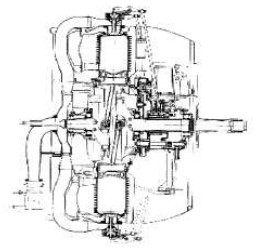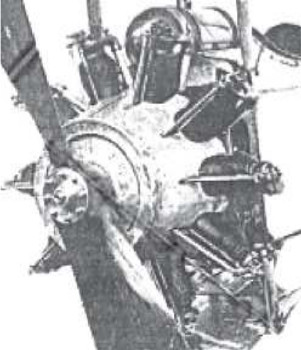Updated: 07-Jun-2024
The British Static Motor Company was founded by the American John W. Smith. (see)
-Before, in the United States, he had founded the Static Motor Company (see) where he had designed some star engines.
-The United Kingdom was interested in his engines and the British Admiralty asked him to produce them in England. In January 1915 John came to England and set up the British Static Motor Company in Birmingham with his partner Charles Schofield. An experienced mechanic from Chicago, Ralph Watson, came with them.
-The ten cylinders of the 300 hp engine were in a single row. Normally, this number of cylinders in a four-stroke radial is divided in two five-cylinder rows. Smith placed them on a single plane. For this reason the crankshaft had two bends and the connecting rods were inclined to coincide with the center of the cylinders.

“Partial cross-section of the 150 hp engine”
-The engine was considered experimental according the US information.
-The one shown above is a small engine, 150 HP intended for the Post Victory 4, but since it was not ready in 1915, it was mounted on a Clerget. Another bigger one gave 300 HP at 1,600 rpm.

“300 HP engine drawing”
-Finally the little one powers a Vickers FB-5. This engine could go in the pull or push position.

“British-Static on Vickers FB-5”
Engines of British Static Motor Company
Model: 10-cyl. radial. 300 hp
Arquitecture:
Cooling:
Total Displacement:
Bore / Stroke: x
Power:
Weight:
Model: Smith Static, 6 cyl.
Arquitecture:
Cooling:
Total Displacement:
Bore / Stroke: x
Power:
Weight:


